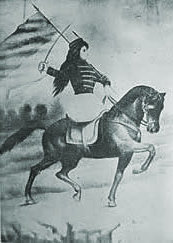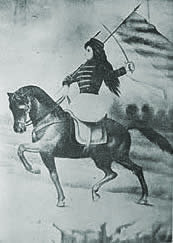
|
Women and Independence in Latin America An exploration of women's involvement in the Latin American Wars of Independence |

|

|
Women and Independence in Latin America An exploration of women's involvement in the Latin American Wars of Independence |

|
Gender:Female
Ethnic origen: White
Events:
| 1789 | - | Lima | - | Unknown | - | She was Abbess of Santa Catalina Nunnery, Lima in 1789. |
| 1794 | - | Lima | - | Unknown | - | She allowed lay people to be buried in her convent. |
| 1797 | - | Lima | - | Unknown | - | She was imprisoned to prevent her re-election. |
Connections:
NunsBiography:
As Abbess of Santa Catalina Nunnery, Lima in 1789, she confronted the Archbishop of Lima in 1789 in a move to resist reforming the convent. She also took on and defeated two Viceroys (Francisco Gil de Lemos y Taboada and the Marqués de Osorno). The convent was lax: male visitors were allowed and nuns attended bull fights. On 21 March 1789, the archbishop wrote to the king complaining of the “scandalous and criminal disorder” of the nuns. In August 1780 the king replied that the viceroy and bishop should make the nuns obey. Three years later, nothing had changed. In February 1794 there was a “public scandal” as Palacios broke canon law by allowing a lay woman to be buried within the cloister walls (ground reserved for consecrated virgins). The archbishop appealed to viceroy Gil de Lemos who agreed to undermine the abbess by appointing another abbess who would rule the nunnery under their direction. Doña Josefa Próspera Gómez was chosen to replace Palacios on 6 March 1794. At the appointed time Próspera Gómez didn’t turn up, she was “ill”. Two weeks later, she was inaugurated; this time Palacios was absent. Palacios planned for re-election in 1797; she had much support in the nunnery due to her relaxed regime, and several royal officials and Lima professionals. When it was apparent that Palacios would be re-elected, the archbishop accused her of using “unethical and illegal means” of winning. She was tried and found guilty, and hence not eligible for re-election. Palacios challenged this verdict and, through a lawyer, appealed to the Viceroy. Friends in high places enabled Palacios to win her appeal and she was reinstated as abbess. The archbishop appealed to the new Viceroy, Marqués de Osorno. Osorno redirected the case to the Royal council of Indies in Madrid; it took 3 years to reply. Meanwhile Palacios was abbess. In 1800 the archbishop admitted “his impotence to impose his authority on the nuns of Lima” and asked the king to intervene. Martín concludes: “Although the Spanish empire in America had already begun to crumble at the beginning of the 19th century, the colonial nuns, symbolised by Doña Augustina Palacios, still stood erect and unshakeable in their determination to preserve their freedom and autonomy […] Colonial nuns seem to have truncated their femininity by renouncing motherhood and marriage. In reality, however, they gained a personal independence and freedom seldom enjoyed by their sisters in the secular city.” (Martín, 236-242.)
References:
Martín, Luis (1983) Daughters of the Conquistadores: Women of the Viceroyalty of Peru